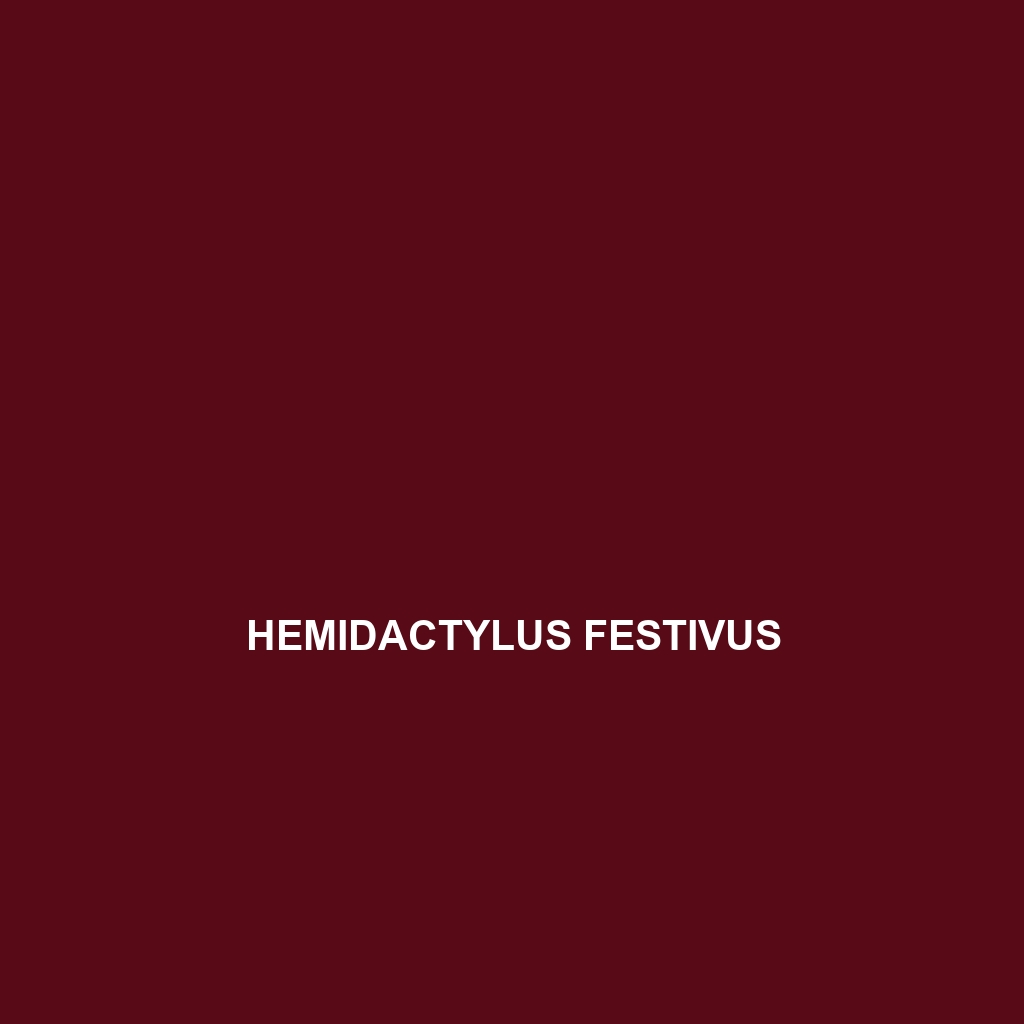Common Name
Hemidactylus festivus
Scientific Name
Hemidactylus festivus
Habitat
Hemidactylus festivus thrives in a diverse array of habitats, predominantly found in tropical regions of Africa. This species prefers humid environments such as rainforests, where it can easily find shelter and food. However, it has also adapted to savannas and areas near human habitation. These geckos are especially prevalent in coastal regions with marine habitats, which provide abundant insect populations for their diet. The ideal temperatures for Hemidactylus festivus range from 20°C to 30°C, showcasing their preference for warm climates. They are capable of tolerating some variations in humidity, yet they thrive best in consistently moist environments, which provides them with optimal living conditions.
Physical Characteristics
Hemidactylus festivus is a small to medium-sized gecko, typically measuring between 10 cm to 15 cm in length. Its body features a slender, elongated shape, which helps it navigate through thick vegetation. The skin is covered with small, rough scales and displays a variety of colorations ranging from light brown to vibrant green and yellow patterns that aid its camouflage against predators. A distinguishing feature of Hemidactylus festivus is its large adhesive toe pads, which allow for exceptional climbing abilities. These adaptations enable them to explore a wide variety of vertical surfaces, aiding their survival and hunting practices.
Behavior
Hemidactylus festivus exhibits primarily nocturnal behavior, becoming active at dusk when it begins its hunting activities. During the day, these geckos seek refuge in crevices, under tree bark, or within leaf litter to avoid daytime predators. During the mating season, males engage in elaborate courtship displays that include head bobs and body shakes to attract females. Social interactions can be competitive, especially among males, as they establish territories marked by vocalizations and scent markings. Their unique locomotion, including quick darting and climbing, highlights their adaptability and agility in various environments.
Diet
Hemidactylus festivus is classified as an insectivore, primarily feeding on a diet of insects such as moths, crickets, and various moths. Their role as predators in the ecosystem is significant, helping to regulate insect populations. They use their quick reflexes and keen eyesight to hunt effectively during their nocturnal activities. Occasionally, they may consume small invertebrates, demonstrating an opportunistic feeding strategy that maximizes their energy intake.
Reproduction
The reproductive cycle of Hemidactylus festivus is characterized by a breeding season that coincides with the wet season, typically occurring from late spring to early summer. Males display courtship behaviors such as vocal calls and physical displays to attract females. After successful mating, females lay between 2 to 4 eggs in sheltered areas, such as under stones or in soil crevices. The eggs incubate for approximately 6 to 8 weeks, depending on environmental conditions. Parental care is absent in this species, with hatchlings emerging independent and fully capable of hunting shortly after birth.
Conservation Status
Currently, Hemidactylus festivus is listed as Least Concern on the IUCN Red List. The species is fairly widespread and adaptable to different environments, which helps maintain its population stability. However, habitat destruction due to deforestation and urban development poses potential threats to their long-term survival. Conservation efforts aimed at preserving tropical habitats are crucial to ensuring the continued existence of this species and its ecosystem.
Interesting Facts
Hemidactylus festivus is known for its remarkable ability to regenerate its tail after losing it due to predator encounters. This adaptation serves as a vital survival mechanism, allowing them to escape threats. Moreover, this species can change its coloration slightly based on its environment, helping it blend in and avoid detection. Their vocalizations, which can be heard during mating season, contribute to their social interactions and territorial displays.
